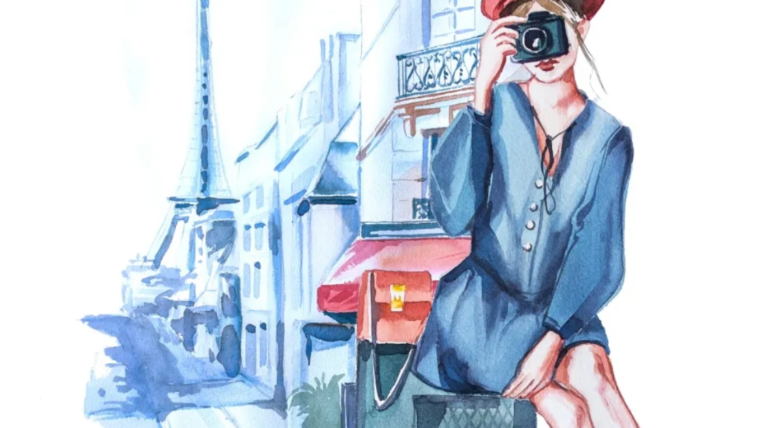I’ve lost count of how many times I’ve been to Venice. Each visit reveals a new layer, a different rhythm. Yet every time I step onto the ferry and watch the skyline rise from the lagoon, I still feel it. That quiet awe. The crooked towers. The faded domes. The morning light catching on ancient stone. It always stops me in my tracks. I can’t help but think: how can this enchanting place be real?
But more recently, another question has started to surface. It’s quieter, more persistent. With the rising prices, the crowds, the added tourist tax, and growing frustration from locals, I’ve begun to ask myself: is Venice worth visiting anymore? Not in the abstract, but right now. With everything it demands from you: the cost, the planning, the patience.
Venice has always held a singular allure. For centuries, it has stood as a symbol of romance and imagination. Cities across the world have tried to recreate its beauty, from the Grand Canal in Las Vegas to full-scale water towns in Shenzhen. Even Qatar has its own Little Venice, built to mirror the city’s canals and pastel façades. But these replicas, no matter how grand, only echo the original. Because Venice isn’t just a place you admire. It’s something you feel. Something you move through slowly. Something that stirs you.
Even so, that dream is shifting. Whether you’re coming for the first time or returning with nostalgia, the mood has changed. Travel forums aren’t just filled with must-sees and restaurant tips anymore. They’re filled with hesitation. Questions. Concerns. And increasingly, the most common one is: is Venice worth visiting today?
I asked myself the same on my most recent trip. The pull to return was still strong. It always is. But as I stepped onto the familiar ferry, something felt different. I knew the answer wouldn’t be simple. Like Venice itself, it would be layered, emotional, a little frustrating, and entirely unforgettable.
Navigating Venice: Challenges and Unique Appeal
Visiting Venice today demands effort. This isn’t a city that simply reveals itself effortlessly, especially if it’s your first time. The main vaporetto lines, Venice’s public transport on water, are often packed like sardine cans, making getting around a crowded experience. Even Google Maps, usually reliable, struggles with Venice’s ancient, maze-like layout of calli and campielli, which explains why getting lost in Venice is almost inevitable. Add in new access fees, mandatory museum tickets, and a €7 bottle of water near Piazza San Marco, and many travellers start to ask: Is Venice worth all this hassle? These are common Venice travel challenges many tourists mention.
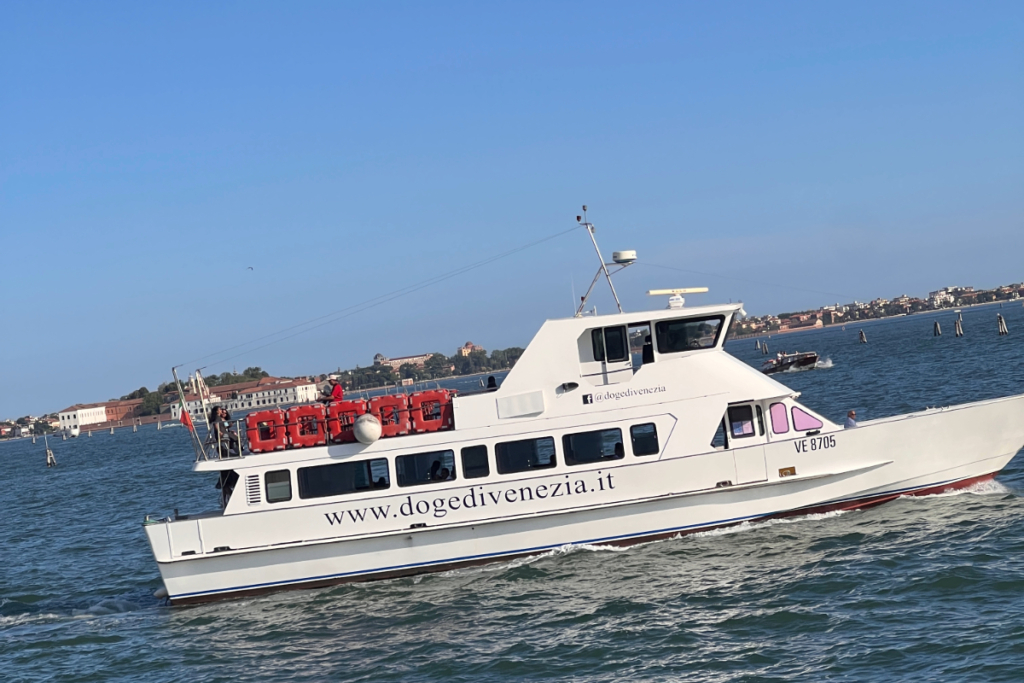
But here’s what I’ve learned over many visits: Venice is designed to slow you down. This isn’t accidental; it’s how the city protects what makes it so uniquely special. The longer you resist rushing or ticking off a checklist, the more rewarding your visit becomes. Just a ten-minute walk away from major attractions like the Rialto Bridge or Piazza San Marco, the noise of tourism fades. You might find yourself alone on a narrow bridge, surrounded by silence broken only by the gentle lapping of water that flickers like old glass. In these quiet moments, authentic Venice experiences emerge — and the city truly breathes.
My Personal Connection to Venice Italy
My connection to Venice isn’t about the grand, romantic first trip of a wide-eyed tourist or the fleeting sparkle of celebrity glamour. For me, the city’s pull runs much deeper and more personal. My partner, Franco, is from Jesolo, a bustling, sun-drenched beach town just across the lagoon. Jesolo feels worlds apart from Venice’s intricate canals. It offers easy living with wide, golden beaches, bikes everywhere, and honest, simple seafood restaurants.
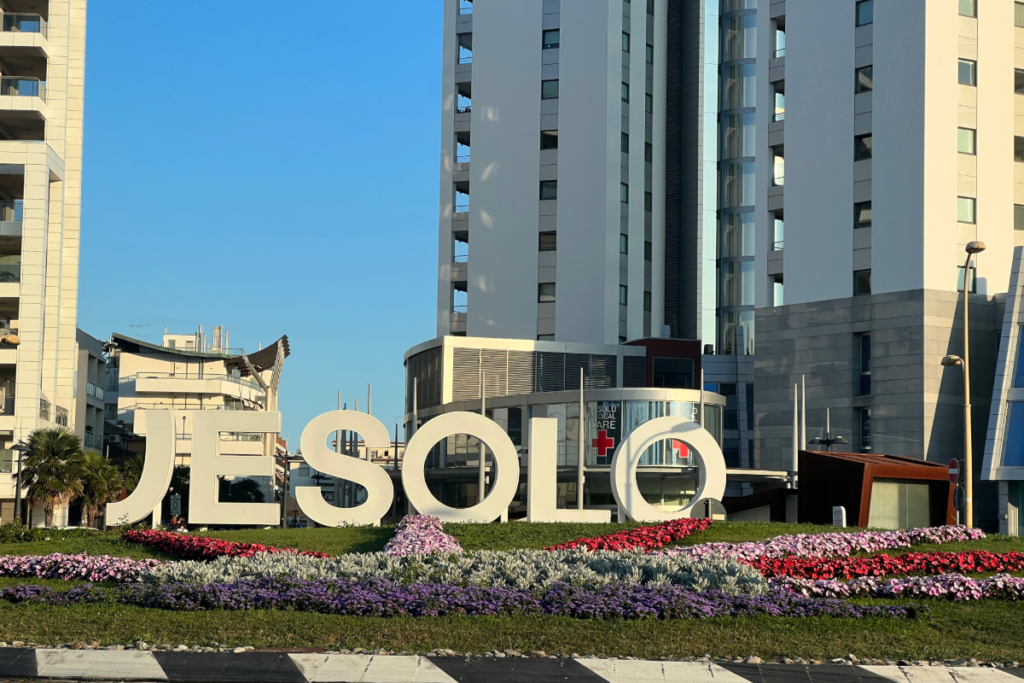
Yet, every time we visit his family, we make a point to carve out a day just for Venice. This regular pilgrimage reminds me why Venice is worth the visit, offering a unique perspective far removed from the typical tourist rush. It’s a slower, more meaningful way to experience the city.
Our visits have become a cherished ritual. We begin with a short bus ride, then catch the ferry slicing across the shimmering lagoon. From that moment, we let the day unfold naturally. We walk slowly, savouring small plates of cicchetti and deliberately losing ourselves in Venice’s ancient, winding maze of alleys. Venice embraces us, familiar yet astonishing, revealing something new with every visit.
That profound contrast between the sun-bleached calm of Jesolo and the tangled, dramatic embrace of Venice forms the heart of its enduring appeal for us. One resets the spirit with simplicity; the other stirs it up, demanding every ounce of our attention and presence. It offers a distinctly alternative way to experience Venice beyond the usual tourist path.
What Keeps Us Coming Back? The Cicchetti Culture
Here’s the undeniable, delicious reason we keep returning. The magnetic pull that overrides any modern frustrations, providing the best of Venice local food experiences: cicchetti.

These aren’t gourmet tapas or elaborate small plates. They’re small, unassuming snacks, simple slices of bread topped with whipped salt cod (baccalà mantecato), briny olives and anchovies, delicate slivers of prosciutto, or savoury little fried meatballs. You eat them standing up at a worn wooden counter, often with a tiny glass of local wine (an ombra), elbow to elbow with strangers who quickly feel like companions. That’s it. No fanfare, no fuss, just the honest flavours of Venice. This defines the Venetian cicchetti experience.
But it’s more than the food; it’s the rhythm that truly matters. The ritual of stepping into a cosy bàcaro, pointing at what looks good behind the glass, sipping wine slowly, saying little but sharing much in the convivial atmosphere. It’s affordable, authentically local, and refreshingly uncurated. Places like Cantina Do Mori, Al Squero, and Vino Vero still feel like they exist for Venetians first, with tourists merely invited guests. These are some of the best cicchetti bars in Venice.
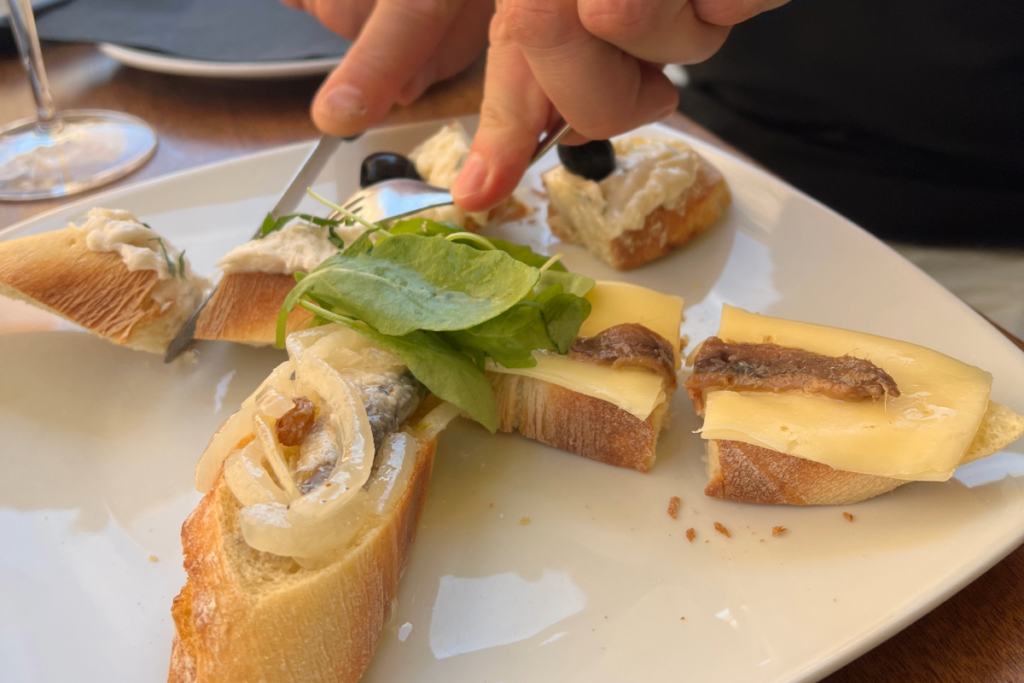
For us, cicchetti isn’t just a meal; it’s the exact moment Venice shifts from a performance for the masses to something profoundly real and intimate. You stop trying to capture it with your camera or check off attractions, and you start simply feeling it. That’s when the city truly lets you in, whispering its secrets. This embodies the essence of slow travel in Venice.
What Venice Keeps Surprising Me on Every Visit
Over my many visits, a few things have consistently caught me off guard, revealing the subtle shifts and ongoing realities of this ancient city. Realities that make you wonder: Is Venice worth the trip when visiting Italy compared to cities like Rome, Florence, and Milan? To answer that, you have to look beyond the postcards and the crowds. And then consider what Venice truly offers once you peel back the surface.
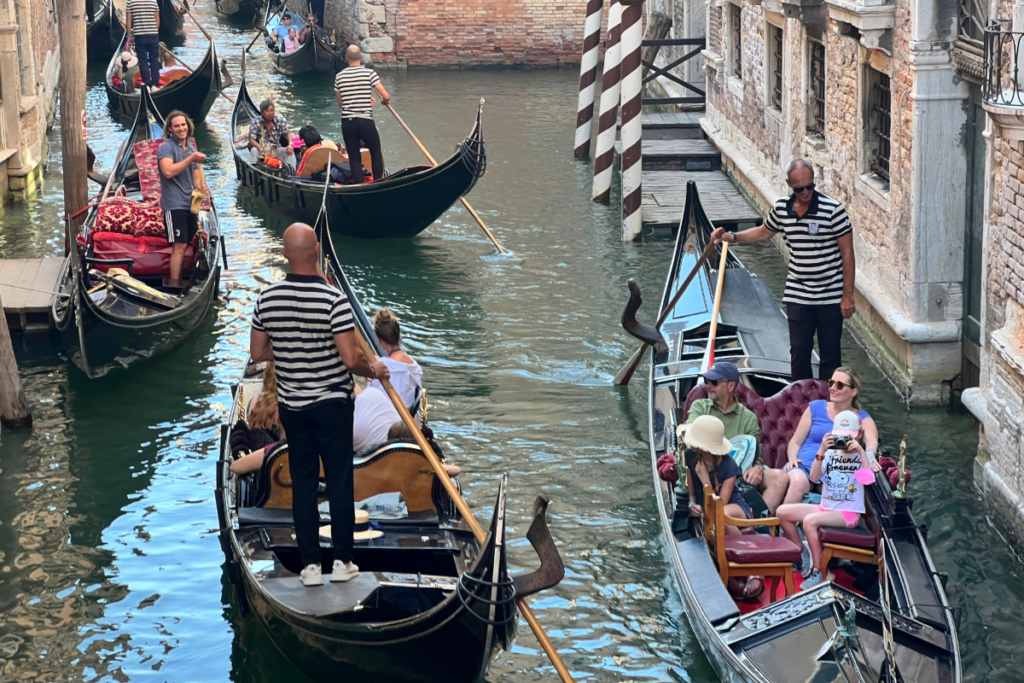
One of the most striking moments, especially after the crowds have gone, is the quiet at night. Once the last day-trippers board their trains or cruise ships, Venice changes completely. I remember one evening when Franco and I walked along the Zattere waterfront, the air cool and soft. It was just us, the still water reflecting distant lights, and the gentle echo of our footsteps on the worn stone. That peaceful moment, free from crowds, made the entire trip feel worthwhile. It was Venice reclaiming itself, a rare glimpse of what Venice at night without crowds really feels like.
Then there’s the pricing. Even with years of experience knowing what to expect, I still wince at the costs. A simple pizza and a glass of wine can easily cost you €40 in the busiest tourist spots. Gondola rides still come in at a staggering €80 for just 30 minutes, and even the so-called budget hotels feel like splurges compared to other places. Venice has never been cheap, but in 2025, the cost of visiting Venice feels more exclusive, almost too much for many travellers.
And you can’t ignore the tension between locals and tourists. You’ll see it in the tired eyes of shopkeepers and hear it in the weary sighs of residents crossing crowded bridges. Signs now remind visitors, “This is not Disneyland.” Behind those words is an unspoken question: Are you here just to take, or are you here to truly pay attention? That tension shows how deeply Venice is struggling with overtourism, a reality you have to reckon with when you visit.
How Venice Still Delivers
Despite the growing challenges, or perhaps because of them, Venice continues to offer an experience like no other. Its beauty feels impossible, even otherworldly. No matter how many images you’ve seen or stories you’ve heard, nothing quite prepares you for the way it rises from the water, as if imagined rather than built. That alone makes Venice worth the journey.
But what truly sets Venice apart is how it resists being consumed quickly. The city forces you to slow down. With no cars and no straight lines, it makes you wander, makes you wait. And in doing so, it offers something rare — presence. There’s a particular rhythm here, a kind of floating stillness, where the act of simply walking becomes meditative. The longer you resist the urge to rush, the more the city gives back.
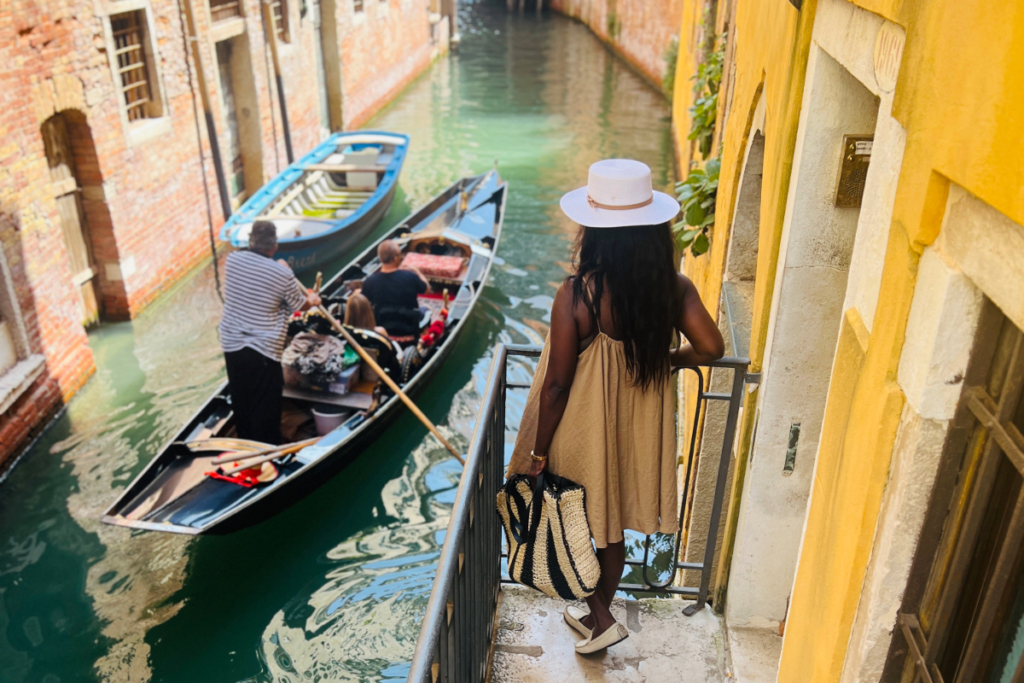
Stay into the evening and Venice changes again. After the last cruise passengers depart and the day-trippers return to the mainland, a hush falls across the canals. The air cools. The water stills. That’s when the city begins to feel like itself again. One night, Franco and I wandered down the Zattere waterfront, the stone damp beneath our feet, the silence deep and velvety. It was one of those moments that felt suspended in time, the kind of beauty that stays with you long after you’ve left.
What’s also remarkable is how much Venice evolves with each return. The first trip dazzles, overwhelms, and confuses. The second feels familiar. By the third or fourth, you start to notice things most tourists miss — a quiet courtyard, a bàcaro with just the right cicchetti, a bridge that always seems to catch the best light. Venice rewards loyalty. The more you return, the more it reveals.
Hate the summer tourist crowds? Here are reasons to travel in September.
Celebrity Weddings in Venice
And then, of course, there’s the city’s status as a global stage. It’s no coincidence that some of the world’s most high-profile celebrations unfold here. George and Amal Clooney’s 2014 wedding turned Venice into a headline. More recently, Jeff Bezos and Lauren Sanchez hosted a multi-day celebration across the island of San Giorgio and the historic Arsenale. Their presence didn’t just make a statement. It reinforced what many already believe: that Venice remains the gold standard for grand, romantic occasions. That lasting allure, even for the world’s most powerful, only adds to what makes Venice so enduringly special.
When you take all this in — the atmosphere, the slowness, the depth — you realise it’s not just a city. It’s a feeling. And yes, Venice is still worth it.
So You’re Planning A Trip to Italy

But is Venice worth visiting if you’ve never been? That depends entirely on what you’re truly after in a travel experience. If you’re looking for ease, seamless convenience, and exceptional value for money, then perhaps not. There are plenty of destinations that offer more comfort with less hassle.
But if you’re chasing wonder, something unforgettable, a little flawed, and fiercely, breathtakingly beautiful, then yes, Venice is absolutely worth visiting. This is a city that has captivated lovers, artists, and dreamers for centuries. It’s inspired countless replicas yet remains utterly unique. If you’re after romantic things to do in Venice, moments of magic, and a deep sense of place, it’s hard to beat.
Because it’s not about checking off landmarks. It’s about how it makes you feel when the crowds finally thin, when the ancient city exhales, and you’re holding a tiny glass of wine beside someone you love, watching the light shimmer over dark, storied water. And it’s those quiet, unscripted moments that make Venice unforgettable and the kind of place you keep returning to in your mind, long after you’ve left.
It’s worth it because there’s still nowhere else quite like it. And if you want to make it worth every euro, don’t miss my tried-and-tested budget-friendly tips I swear by whenever I travel. When it comes to affordable travel in Venice, think smart: skip the pricey gondola rides, hop on public vaporettos, and eat where the locals do—cicchetti and small plates at hidden bàcari. With the right budget-friendly Venice travel tips, you’ll discover just how magical and manageable this city can be. Venice doesn’t need to break the bank. You just need to know where to look.


